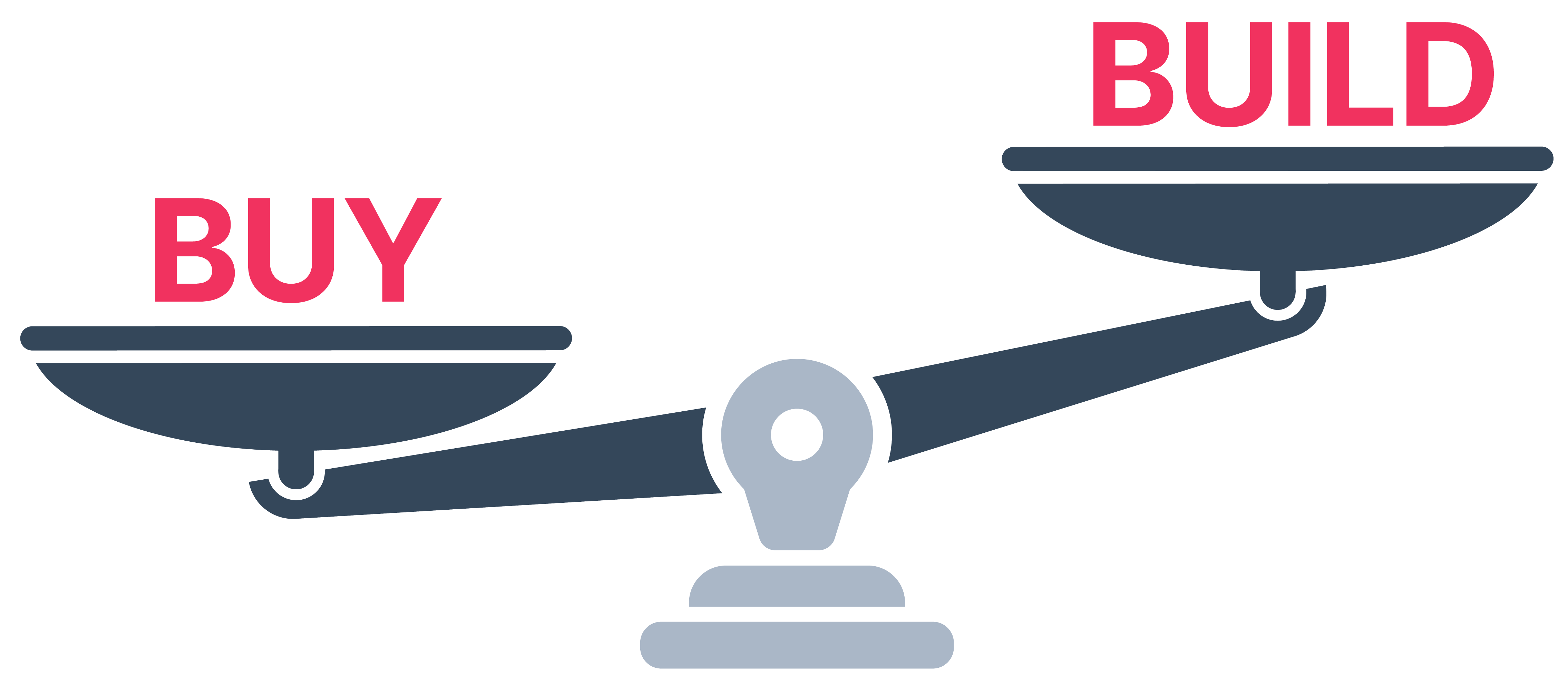For many businesses, the idea of implementing a dashboard makes perfect sense. You need a platform that will show you progress and performance, and the data within it needs to be displayed in such a way that it can be easily understood, giving you valuable insights. Because let’s face it, nobody has time to sift through heaps of raw data, trying to decipher trends, track progress and determine if your team is actually on track to hitting their goals.
So the next question is, then, should you build your own custom dashboard from scratch using traditional programming methods or buy an off-the-shelf solution (like Hurree)? This is what we will be weighing up today, so read on to find out more about each option to determine which will best suit your organisation.
Considerations when building a KPI dashboard
Costs
Building your own custom dashboard is likely going to require substantial financial investment. You will need significant input from engineers and developers, who are not easy to come by, meaning they won’t come cheap. You might be put off by the monthly subscription fee that most dashboard software tools charge, but when you compare that against a freelance engineer or a full-time, salaried engineer, then the pre-built option might suddenly seem a lot more affordable.
Internal resource
If you already have the in-house expertise and skills, however, then the prospect of building internally is more appealing. But what you need to carefully consider is the purpose of those job roles in the first place. What were they actually hired to do? If it wasn’t to build your new custom dashboard, then who is going to pick up the slack and do the tasks that those people were initially hired to do? So while you might already have the knowledge and skills in your organisation, you need to consider what other aspects of the business will suffer as a result of the shift in focus and direction. What initially might not seem like a massive project may quickly become a monumental task when other elements need to be built from scratch e.g the ability to filter data, log in and access controls, shareability, text formatting, exporting options etc.
In the same vein, if you do use internal staff to build the dashboard, what happens when they leave?

Source: Bright Recruitment
Will you have someone else to take over the management of the software, and if so, will they be knowledgeable enough to continue maintaining it? If you buy an off the shelf product, you won’t need to worry about it.
Data visualisation
Being able to see your key metrics and KPIs in a visual way is one of the reasons why dashboards are so effective. Using a variety of data visualisation methods is one of the best ways to highlight trends and performance. Many developers, however, while highly skilled and knowledgeable, do not specialise or have an in-depth understanding of data visualisation and how it can best be used most effectively. There is a risk then, when building your own dashboards, that vital insights will be missed as the data isn’t presented in the most appropriate way.
.png?width=5172&name=Buying%20vs%20building%20your%20own%20dashboard-02%20(1).png)
Hurree dashboard example
Ongoing maintenance
Building a dashboard is not a build it and forget about it job, nor will it be a quick, stand-alone task. Like all software, regular maintenance and updates will be needed to ensure it runs smoothly and efficiently. There are always going to be bugs, push updates, APIs to be added, and general modernisation, all of which take time and valuable resources. If the requirements of the dashboard change, which chances are they will as the business grows and goals and KPIs change, then the developers and engineers will need to be involved in updating and creating new features for the software.
Usually, it’s only once people start using dashboards that it becomes evident what is lacking and what other features need to be added. So while you might have done substantial research before building your dashboard, changes are usually always required along the way, which you might not have accounted for in the planning stages.
Unpredictable costs
The same can be said for unexpected costs associated with building your own dashboard. One key benefit of using a pre-built dashboard software is that you know exactly what costs are expected and when. Most tools will offer a monthly or yearly fee, which often works out more cost effective (you can check our costs out here). When building your own dashboard, it can be difficult to predict future and ongoing costs, so if you want a more reliable cash flow then you would be best opting for a prebuilt dashboard.
Core competency
The phrases ‘stick to what you know’ or ‘don’t quit your day job’ are cliche for a reason, and you might want to consider them when weighing up your options. While you might already have some in-house capabilities, this doesn’t mean that building a dashboard is right for you. Focus on the core competency of your own business and the key goals and objectives. Just because you can develop something, doesn’t necessarily mean you should. Companies like Hurree are likely a more reliable option, because our core competency is creating powerful, efficient and actionable dashboards. We employ teams who are constantly innovating, researching and learning new trends in business intelligence to make our product better for our clients.
Design
In theory you will have more flexibility when building your own dashboard compared to an off the shelf solution. If you have the skills, time and financial resources then you can create whatever you want. While this sounds like the ideal scenario, you need to do your research to ensure the tools in your stack are capable of being integrated into your dashboard. Some platforms only offer full access to their data to select partners, so unless you’re on the list you might not be able to display that data on your dashboard.
Summing up
While we might be slightly biased due to the fact that building dashboards is our bread and butter, it’s crucial to realise that building your own dashboard from scratch is a big undertaking, so unless you are prepared to invest a lot of time and money, then using a tool like Hurree may be the better option.

In the long run, using a pre-built dashboard usually works out significantly cheaper and you will receive ongoing support and updates, without needing to worry about maintenance and unexpected costs. A pre-built option allows you to focus on the most important aspects of your business, while your dashboard provider can handle the technical aspects of your software.
Track and visualise your KPIs in real-time with Hurree. Book a free trial today and discover how to truly harness the power of analytics and transform your company reporting using cross-platform dashboards. If you have any questions then feel free to reach out to contact@hurree.co, we'd be happy to answer them!
Share this
You May Also Like
These Related Stories

How to Use a Dashboard for Project Management

8 of the Biggest Excel Mistakes of All Time



